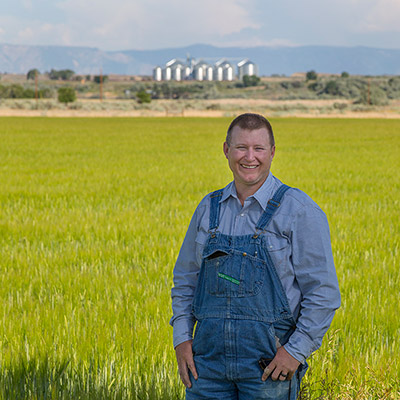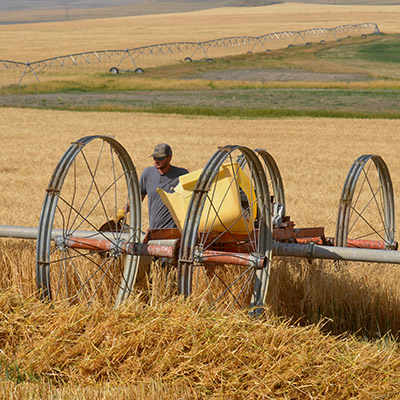Bighorn Barley
 Securing Bighorn Barley for Craft Beer
Securing Bighorn Barley for Craft Beer
The Bighorn Basin of northwest Wyoming and southern Montana is a premium U.S. barley growing region. In 2013, Briess secured the Basin’s annual potential barley production for American craft brewers and premium food manufacturers through acquisition of a large, state-of-the-art elevator operation in Ralston, WY. The Ralston Elevator connects Briess customers with hundreds of experienced barley growers. The Briess Seed Plant in nearby Powell provides growers with certified seed to assure the purity of Briess barley crops. And the University of Wyoming Research Center in Powell is a valuable resource for our seed certification and barley variety development programs.
Northwest Wyoming barley is bright and plump
The Bighorn Basin of northwest Wyoming was selected to anchor the Briess Barley Program because it produces some of the highest quality barley in the world. Distinguishing characteristics of the region combine to produce exceptionally bright, plump, low protein barley desirable for American craft beer. Part of the U.S. Intermountain Region, the Basin is also among the most stable barley producing areas in North America. Bighorn Barley from this region is our barley of choice for premium lines of Briess Kilned and Specialty Malts.
Unique characteristics of the region contribute to it being a premium U.S. barley growing region:
- Semi-arid climate with an average rainfall of 5-6″
- Shoshone Project collects mountain water for flood irrigation for more than 700 farms and 94,500 acres.
- Fertile soil
- Water is delivered directly to the roots of the barley plant, so water rarely touches the canopy or barley heads, decreasing disease and staining
- Irrigation water is controlled, so plants get watered when they need it
- Controlled watering produces high quality bright, plump, low protein kernels
- Cool nights and hot days
- Malting barley is an important rotation crop in this region
- Little to no competing commodity crops
- Exceptionally experienced barley growers with generations of experience
Malting barley is one of three principal rotations crops that are very important to the success of Bighorn Basin agriculture, working especially well when planted in rotation with dry edible beans and sugar beets. It is also an ideal region for producing many varieties of barley.
 Southern Montana barley loves cool nights
Southern Montana barley loves cool nights
Southern Montana is an intermountain, semi-arid area with an average annual rainfall of about 13 inches. It has become an important U.S. barley growing region in part due to the combination of cool night temperatures and barley varieties bred specific to the style of farming employed there. While some flood irrigation occurs in the mountains, most growers in the region use dryland farming—a method of farming in semi-arid areas without the aid of irrigation, using drought-resistant crops and conserving moisture.
To make the most of the moisture they receive, southern Montana barley growers have developed strong moisture management skills. Some supplement with pivot irrigation. Different barley varieties bred for the region further offer options for selecting varieties best suited to their area. And they get help from Mother Nature—cool night temperatures characteristic of the intermountain region. Barley, especially two-row, can take the summer heat of southeast Montana as long as it cools off overnight.
The region is dominated by family farms that like to grow malting barley, consistently producing large quantities of very high quality barley. For southern Montana growers, barley is an important crop. It fits nicely into rotation with sugar beets and wheat in irrigated production, as an alternate dryland crop to wheat, and as an annual forage crop in dryland and irrigated production.


